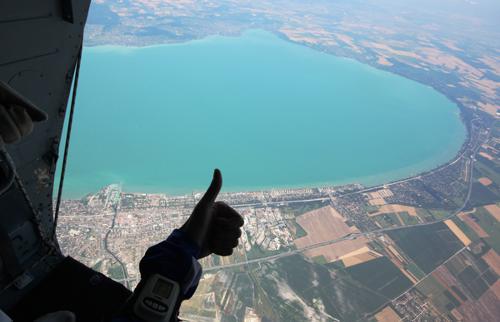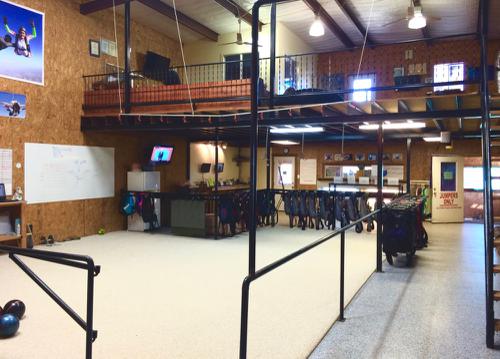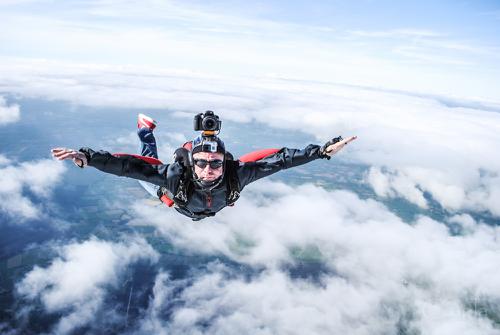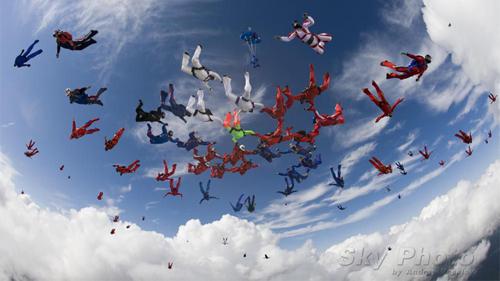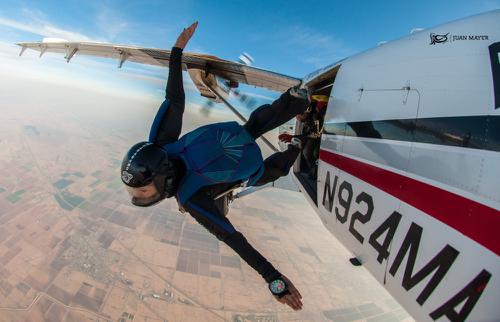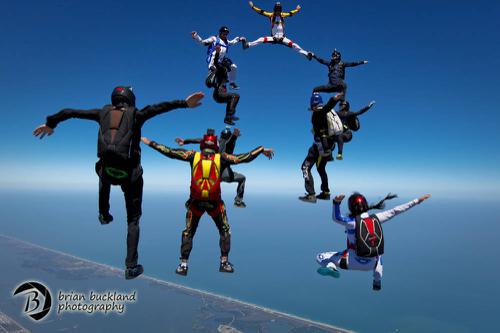How to Approach Your Recurrency Skydive
Image by Joel StricklandWhat’s the second-scariest thing in the world? Probably, it’s the open door of a plane at altitude as seen through the eyes of an AFF-1 student. Remember that moment? Most of us do.
What’s the first-scariest thing in the world? Arguably: the open door of a plane at altitude, seen through the eyes of a skydiver doing a recurrency jump after a long hiatus.
Coming back to skydiving after a long time on the ground is an inarguably intense experience -- possibly even a bit more so than the first time your feet left the plane. First of all, you know a lot more about what can go wrong. You’re likely to feel a lot more pressure to perform “like an old pro,” which never helps matters. And -- if you took that time off to heal an injury that grounded you -- you’re getting back on the horse, cowboy/girl, and that ain’t no easy thing.
How do you approach recurrency with the best chance of a successful reintroduction to the wild blue yonder? The same way you do everything else in airsports: mindfully, methodically and with a lot of sensitivity to your unique position in the sport and emotional biome.
1. Know the actual rules.
The United States Parachute Association gives these guidelines for recurrency in the Skydiver's Information Manual. (Non-American skydivers may have different exact guidelines to follow.)
A License
“USPA A-license holders who have not made a freefall skydive within 60 days should make at least one jump under the supervision of a currently rated USPA instructional rating holder until demonstrating altitude awareness, freefall control on all axes, tracking, and canopy skills sufficient for safely jumping in groups.”
B License
“USPA B-license holders who have not made a freefall skydive within the preceding 90 days should make at least one jump under the supervision of a USPA instructional rating holder until demonstrating the ability to safely exercise the privileges of that license.
C and D License
“USPA C- and D-license holders who have not made a freefall skydive within the preceding six months should make at least one jump under the supervision of a USPA instructional rating holder until demonstrating the ability to safely exercise the privileges of that license.”
2. Lay the emotional groundwork to support your success.
You’re not the first recurrency-seeker to freak out. Recurrency jumps are often hard -- especially if you're a newer skydiver. Many a lapsed skydiver has turned the car around on the way to the drop zone rather than get back in the sky.
You’re going to need to use your tools. Call a friend -- even a non-skydiver -- to meet you at the DZ and keep you accountable. Watch videos of your past jumps to remind yourself that you'll be fine (and you'll be ecstatic when you land). Listen to music that gets you stoked. Read journal entries from the time that you were actively skydiving and having an awesome time up there.
If you were out because of an injury or a medical issue, make sure to chat to your doctor about your intention to reenter the sport. If you need to, get a second opinion -- but hear them out.
3. Make sure your gear is up to the challenge, too.
Has your gear been stored for more than a season? You’ll need to take a close look at it before you call it back into action. Parachutes don’t like to sit on the bench, y’know.
After a longer period of time -- especially if the rig wasn’t stored unpacked in a climate-controlled environment with the stow bands removed -- the materials themselves may start to break down. If your rig has brass grommets on the main d-bag, the metal may have reacted with the rubber of the stow bands (making them hard, brittle, and incapable of doing their snappy little jobs). The ZP coating might have “glued” the cells together to the point where the canopy needs to be manually fluffed out.
If your magical backpack has been in storage for any extended period of time, it’s smart (and confidence-inspiring) to have a rigger put it through its paces. Get a thorough inspection of all the nylon, the harness and the container, as well as the reserve repack that’s surely due. When it comes back, you’ll know that it’s airworthy (or you can get your hands on something that is).
4. Recognize your “aliefs” (and how to handle them).
Coined by philosopher Tamar Gendler, an “alief” is another form of belief, but it’s not the same thing. We hold beliefs in response to what things are. An alief is a response to how things seem. Knowing and feeling that difference on a recurrency jump can bring you a lot of relief. Here’s how it works.
As a skydiver, you have probably put in plenty of hours packing, gear checking, loading into a plane, exiting a plane, freefalling, flying your canopy and landing. With enough repetition, your brain has stored all these behaviors and recognizes them. On a conscious level, you believe yourself to be perfectly capable of performing the actions of a skydive. However, when you come back after a long hiatus, alief rears its ugly head.
When you believe you can make a skydive but your body has become unaccustomed to the physical sensations of skydiving, you have an alief. The mental state of alief is a primal form of fear that underlies a moment you know you are safe in your head but your body's not on the same page (i.e. standing on a pane of rock-solid, clear glass, hundreds of feet over a canyon floor).
Alief is a funny thing: it’s what makes people refuse to drink soup from a factory-fresh bedpan, eat fudge that looks like poop, or pull the trigger of an empty gun with the barrel against their head. It might also keep you from getting on the plane because damnit it just feels wrong.
If you understand what you’re experiencing, though -- it might not. Let me be the first to high-five you back into the fold, friend.
By nettenette, in General,

